Exploring Connections, Differences, and Co-occurrence
The relationship between cerebral palsy (CP) and autism spectrum disorder (ASD) has garnered increasing attention in recent years. While these are distinct neurological conditions with unique characteristics, research indicates that they frequently co-occur more often than would be expected by chance. This article delves into whether cerebral palsy causes autism, examining the prevalence, shared neurological factors, diagnostic challenges, and implications for treatment and early intervention.
The Co-occurrence of Cerebral Palsy and Autism is More Common Than Often Recognized
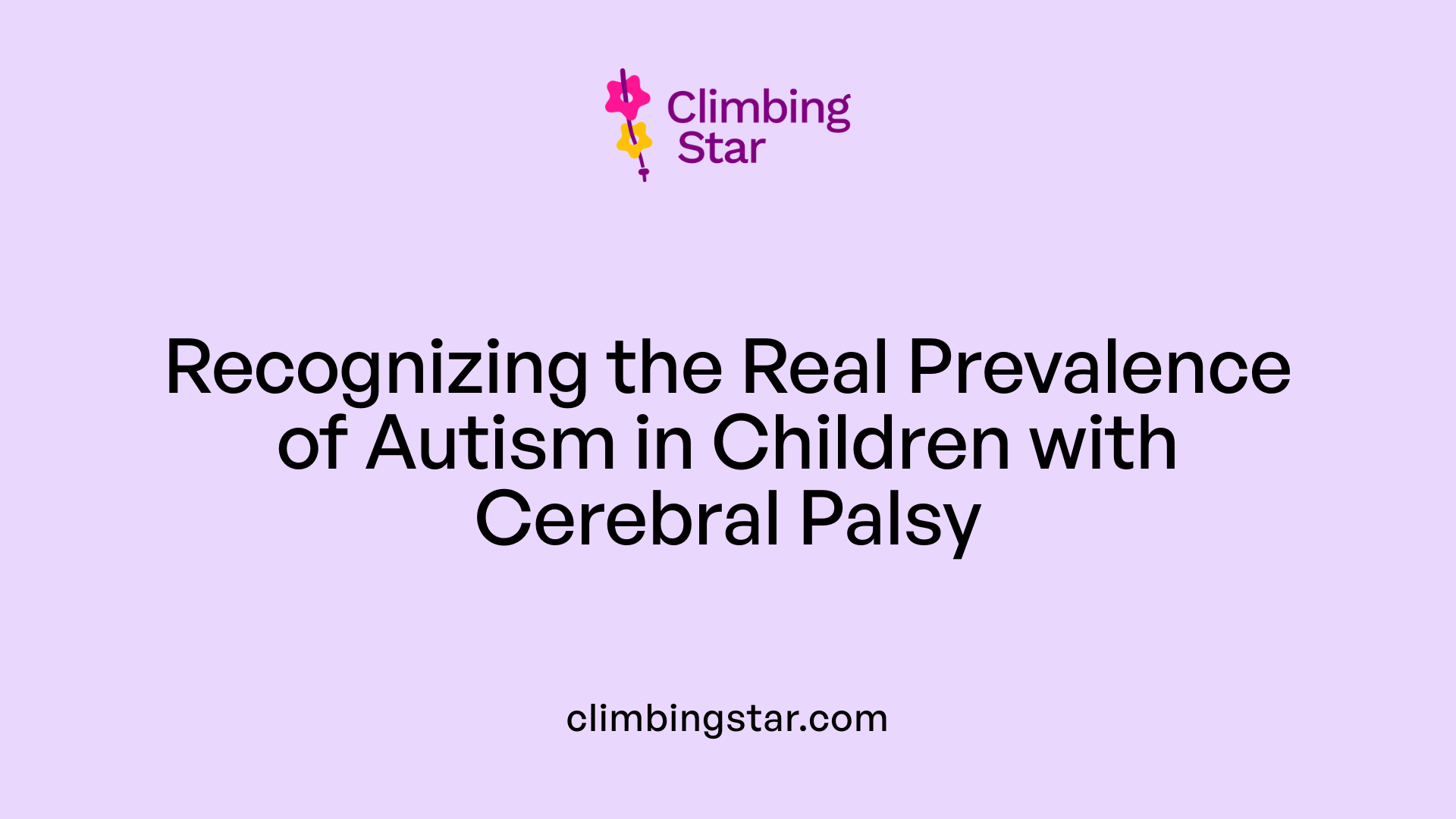
What are the prevalence rates of ASD in children with cerebral palsy?
Children with cerebral palsy (CP) are significantly more likely to also have autism spectrum disorder (ASD) compared to children without CP. Multiple studies indicate that approximately 6.9% to 8.2% of children with CP also have ASD. For example, data from the CDC’s Autism and Developmental Disabilities Monitoring Network reports a prevalence of about 8.2% among those with CP, which is roughly three times higher than in the general population.
This high co-occurrence emphasizes the need for routine ASD screening in children diagnosed with CP. The rates can vary depending on the subtype of CP and other neurological factors, but overall, the presence of ASD among children with CP is a recognized concern within pediatric neurology and developmental care.
How do statistics indicate increased risk?
Research shows that children with CP are at a markedly elevated risk for developing ASD. After adjusting for demographics, the odds ratio of having ASD if a child has CP is about 5.07, meaning they are five times more likely to have ASD than children without CP. Additionally, the prevalence of autism in children with CP is around 7-8%, compared to just over 1% in the general pediatric population.
Furthermore, data reveal that children with CP who also have seizure disorders face a 41% prevalence of autism, confirming the close links between neurological conditions. Children with CP are also at a higher risk for attention-deficit/hyperactivity disorder (ADHD), which often complicates diagnosis and treatment.
Are there differences in ASD prevalence across different types of CP?
Yes, the occurrence of autism varies across different CP subtypes. Non-spastic cerebral palsy, especially the hypotonic form, shows a higher prevalence of ASD, with up to 18.4% affected. In contrast, children with spastic cerebral palsy generally have lower rates of co-occurring autism.
This variation is likely due to differences in brain injury location, severity, and genetic factors influencing neurodevelopment. Children with less severe motor impairments (e.g., GMFCS levels I-II) are more likely to be diagnosed with ASD, while those with severe mobility limitations often have more profound neurological impairments.
| Aspect | Prevalence Rate | Notes |
|---|---|---|
| Autism in children with CP | 6.9% - 8.2% | Higher than in general population |
| Autism in general population | ~1% | Baseline comparison |
| ASD among children with non-spastic CP | up to 18.4% | Particularly in hypotonic type |
| Autism prevalence by CP subtype | Varies | Lower in severe spastic types |
| Children with CP and seizure disorder | 41% | Higher prevalence of autism |
Overall, understanding these statistics helps improve early identification and tailored interventions, which are crucial for improving developmental outcomes for children affected by both conditions.
Understanding the Underlying Causes and Shared Risk Factors
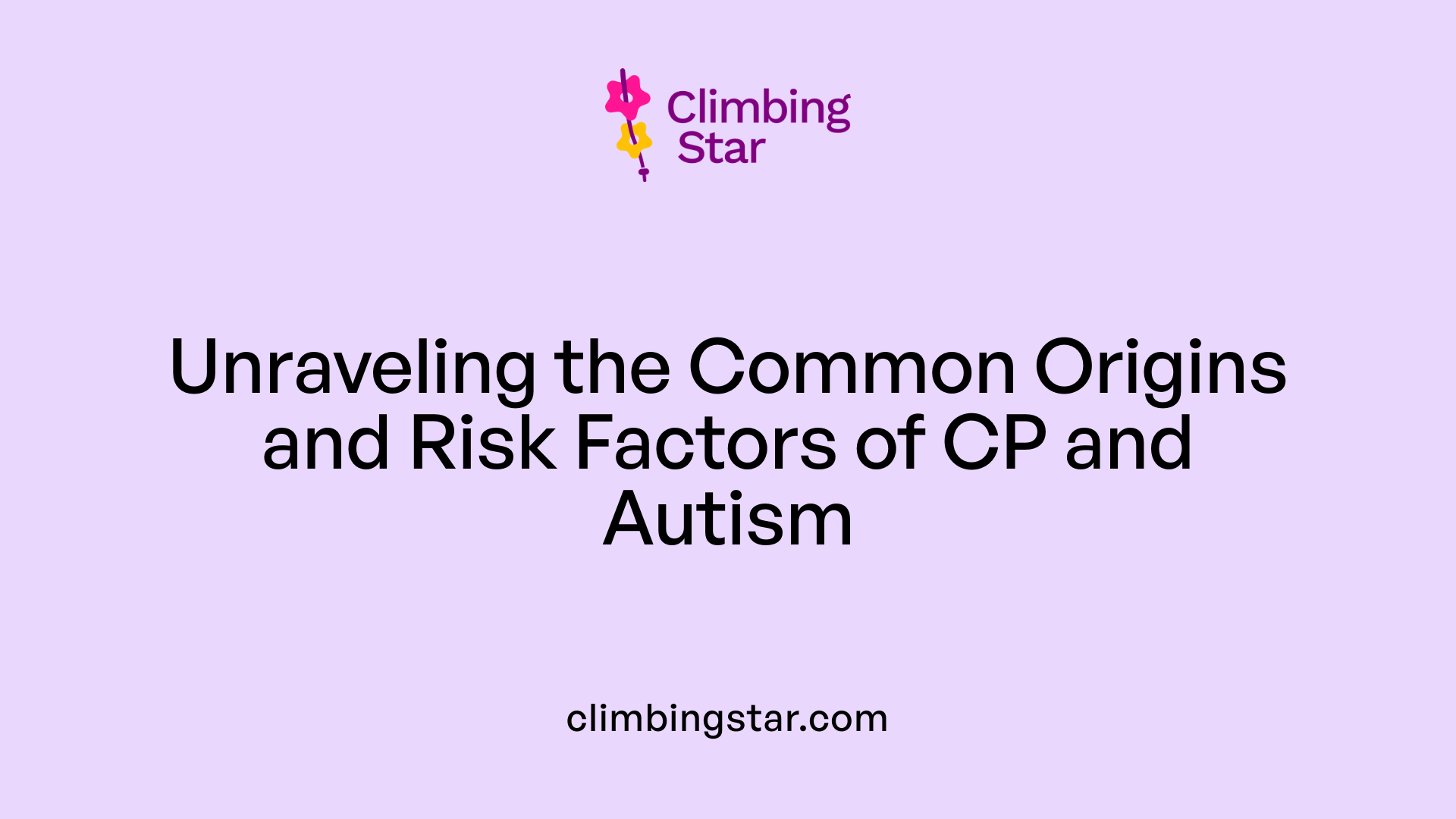
Is there a relationship or causal link between cerebral palsy and autism spectrum disorder?
Research shows a significant association between cerebral palsy (CP) and autism spectrum disorder (ASD). Children with CP are about five times more likely to also be diagnosed with ASD compared to children without CP. Data indicates that approximately 6-7% of children with cerebral palsy have autism, which is notably higher than the roughly 1% prevalence in the general population.
Despite their close association, CP and ASD are distinct conditions. Cerebral palsy primarily affects muscle control, movement, and posture due to early brain injury, often occurring around birth. In contrast, autism mainly impacts communication, social interactions, and repetitive behaviors, stemming from differences in brain development.
The overlap of these conditions suggests that shared neurodevelopmental pathways and risk factors may contribute to their co-occurrence. Factors such as genetic variations, brain injury, and environmental influences like prematurity, infections, or exposure to certain medications or toxins during pregnancy have been studied for their potential roles.
However, current evidence does not establish a direct cause-effect relationship. Instead, the connection appears to come from common early-life risk factors impacting brain development. Both disorders involve disruptions in neural pathways, but they manifest differently—movement problems in CP and behavioral or social difficulties in ASD.
Ongoing research continues to explore how genetic and environmental factors influence both conditions, aiming to better understand their shared roots. Recognizing the shared neurodevelopmental origins can guide earlier diagnosis and more targeted interventions, improving outcomes for children affected by either or both conditions.
| Aspect | Description | Additional Notes |
|---|---|---|
| Brain Injury & Development | Early brain injuries can influence the development of both CP and ASD | Brain injury causes motor and developmental issues in CP, and can impact neural circuits involved in social behavior in ASD |
| Genetic Factors | Specific genetic variants may affect brain development pathways | Genes linked to neurodevelopment may contribute to both disorders, though no single gene is responsible |
| Environmental Factors | Prenatal and perinatal exposures can increase risk | Factors like prematurity, infections, or toxins may play roles in both conditions |
Understanding the complex interactions between these factors can help improve early detection and personalized treatments, maximizing quality of life for affected children.
Distinct Symptoms and Developmental Characteristics
How can I distinguish between cerebral palsy and autism in terms of symptoms and developmental characteristics?
Cerebral palsy (CP) and autism spectrum disorder (ASD) are both neurological conditions that affect development but in different ways. Understanding their symptoms helps in early detection and intervention.
Motor impairments in CP are the hallmark features. Children with CP often exhibit abnormal gait, muscle stiffness or floppiness, muscle weakness, and coordination difficulties. These can lead to movements that appear unsteady or awkward. Speech and swallowing problems are also common due to motor control issues.
In contrast, behavioral and social features in ASD primarily affect communication and social interaction. Children may show a lack of eye contact, limited facial expressions, and difficulty understanding social cues. Repetitive behaviors, sensory sensitivities, and strict routines are typical behavioral signs.
While the symptoms of CP center around movement and physical control, ASD features are more related to behavior, language, and sensory processing. However, some children with both conditions may exhibit overlapping signs such as delayed speech, abnormal movements, or atypical gait.
Differentiating features include:
- Core focus: Movement impairments vs. social communication difficulties.
- Developmental timeline: Motor impairments tend to be evident early in life, often noticeable within the first year, while social and communication challenges may become more apparent as social demands increase.
- Signs of overlap: Speech delays can be present in both, but in CP, speech issues often stem from motor control problems, whereas in autism, they relate to social communication deficits.
Recognizing these differences aids healthcare professionals in diagnosing accurately. Early assessment using screenings, observations, and evaluations by specialists ensures children receive appropriate support. For children presenting with both motor and behavioral challenges, a comprehensive evaluation can clarify their unique needs.
The distinction is critical for designing targeted treatments—physical and occupational therapies primarily address motor skills in CP, whereas speech, behavioral, and sensory therapies focus on ASD symptoms. Tailored intervention improves overall quality of life and development outcomes for children affected by either or both conditions.
Neurological Pathways Connecting CP and Autism
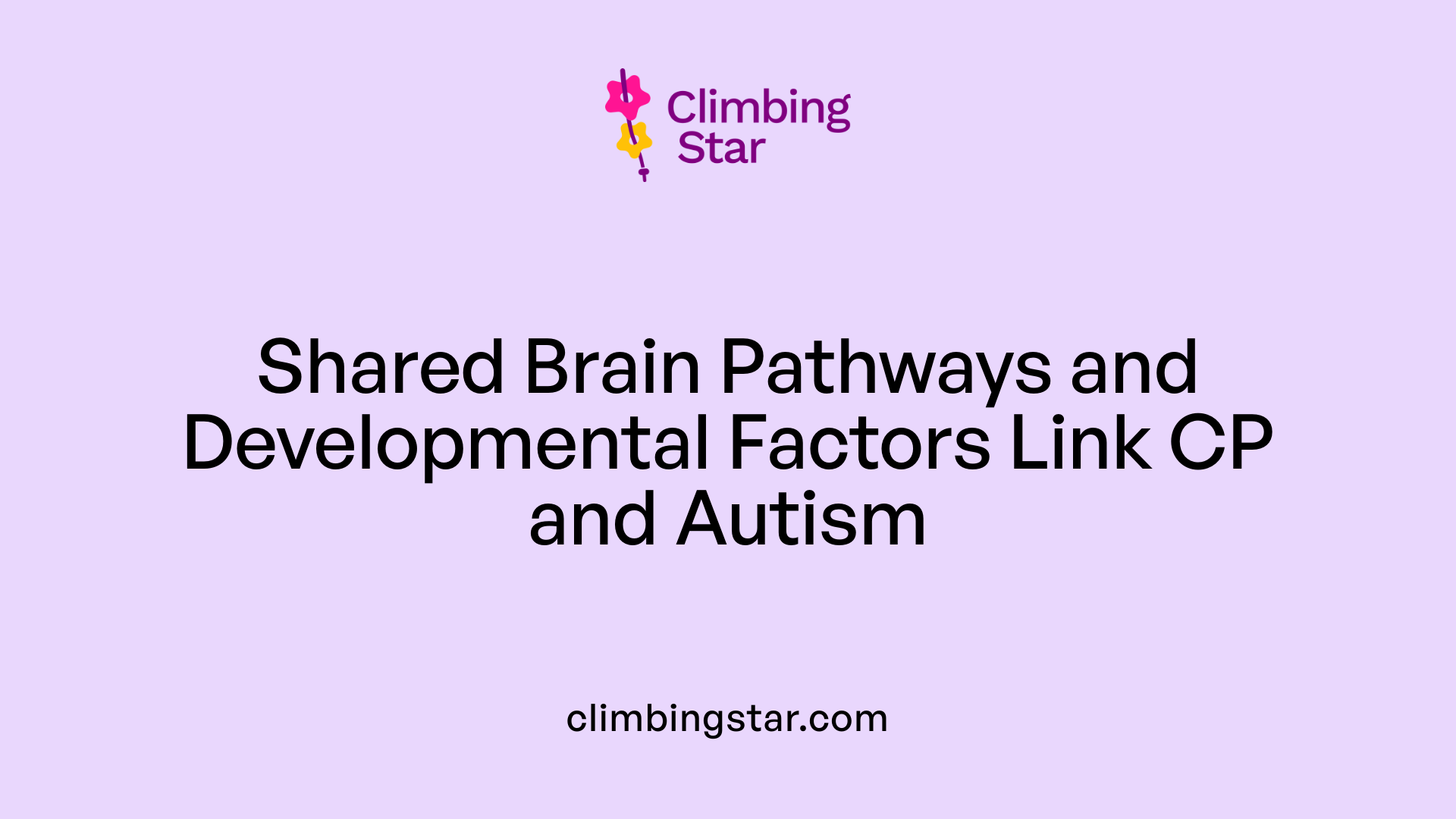
Are there common neurological factors or developmental pathways that link cerebral palsy and autism?
Research indicates that there are indeed shared neurological influences and developmental processes that link cerebral palsy (CP) and autism spectrum disorder (ASD). Both conditions stem from early disruptions in brain development, frequently caused by brain injury either before, during, or shortly after birth. These injuries can affect regions responsible for motor functions as well as those involved in social perception, communication, and behavior.
Children with certain types of CP, particularly non-spastic and hypotonic forms, show a higher likelihood of also being diagnosed with autism. This suggests that similar neurodevelopmental pathways may be involved in both conditions. For instance, abnormal brain connectivity and structural changes may influence both motor control and social skills, clarifying the overlap in symptoms.
Genetic factors also play a significant role. Specific genetic variants have been linked to both CP and autism, indicating that common genetic influences might impact brain development in ways that predispose children to both conditions. These genetic influences can alter neural growth, synaptic connectivity, and neural network organization.
Overall, the intersection of brain injury, abnormal developmental trajectories, and genetic predispositions underscores a complex web of neurodevelopmental mechanisms. These shared pathways help explain why children with cerebral palsy are at an increased risk of also developing autism, highlighting the importance of integrated screening and intervention strategies.
| Aspect | Details | Additional Information |
|---|---|---|
| Cause | Brain injury, abnormal development, genetic factors | Affects motor and social regions of the brain |
| Genetic Influence | Variants impacting neural growth and connectivity | Overlap suggesting shared genetic mechanisms |
| Neurodevelopmental Pathways | Connectivity, neural network formation | Shared pathways affecting multiple brain functions |
| Clinical Evidence | Higher autism prevalence in non-spastic CP, especially hypotonic types | Suggests common neurodevelopmental disruption |
| Implications | Need for early screening and multidisciplinary intervention | To address overlapping features |
Understanding these interconnected neurological factors paves the way for more targeted research and improved clinical care, emphasizing the importance of early detection and comprehensive treatment approaches for children affected by both cerebral palsy and autism.
Prevalence and Implications of Co-occurring Conditions
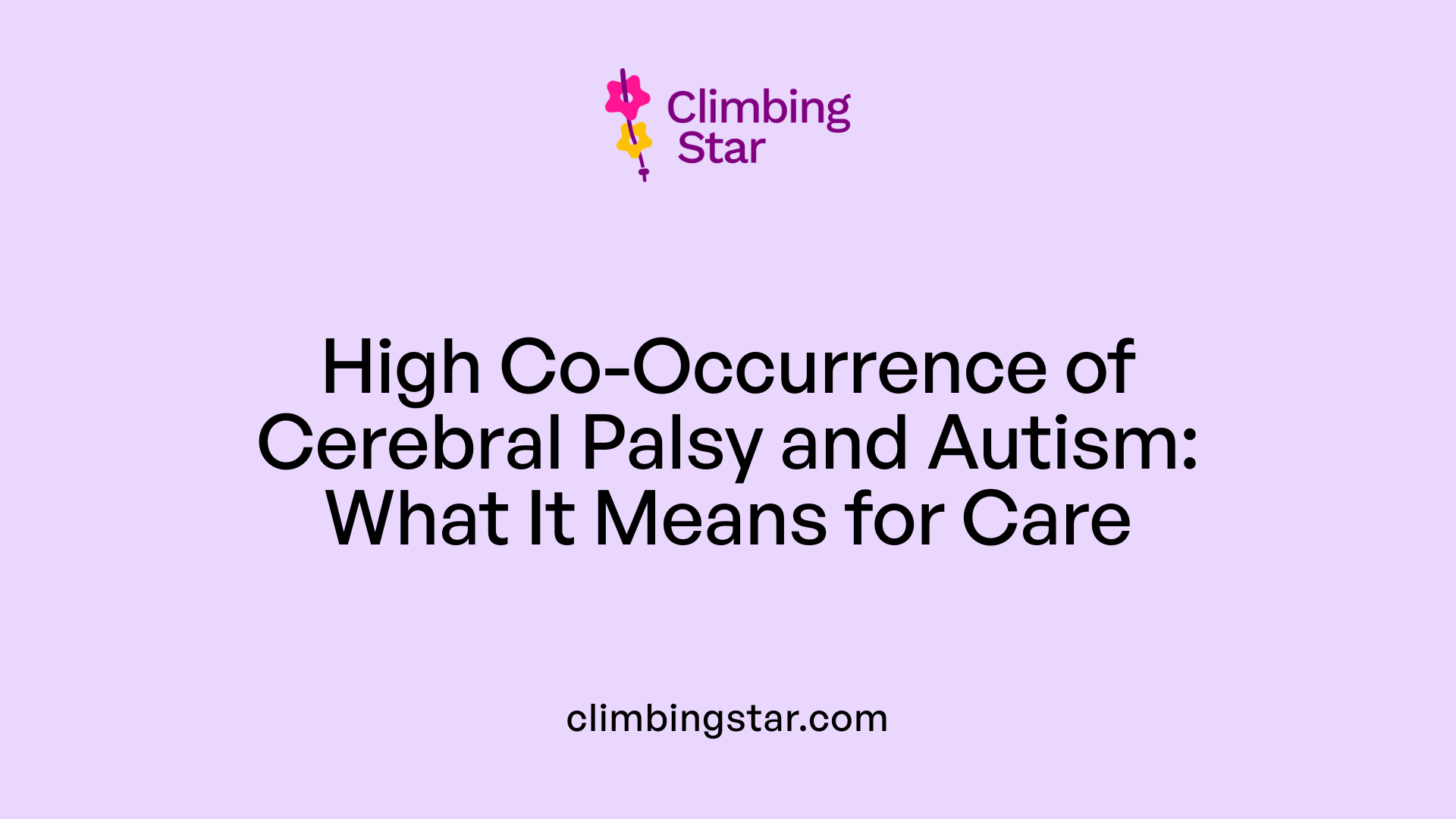
What is the prevalence of co-occurring cerebral palsy and autism?
Research shows that approximately 6.9% of children diagnosed with cerebral palsy (CP) also have autism spectrum disorder (ASD). This rate is notably higher compared to the general child population, where the prevalence of autism is about 2.3% to 2.8%. This means that children with CP are roughly three times more likely to also have autism compared to children without CP.
The likelihood of autism co-occurring with CP varies depending on the type of cerebral palsy. Studies indicate that up to 18.4% of children with non-spastic, particularly hypotonic, cerebral palsy also have autism. This variation highlights the need for targeted screening based on the specific CP subtype.
Overall, the significant overlap between these two conditions points to shared neurological vulnerabilities during early brain development. It underscores the importance of early and comprehensive screening for autism in children diagnosed with CP. Identifying ASD early allows for timely intervention, which can help improve social, communication, and behavioral outcomes.
This high prevalence reinforces the importance of integrated care approaches that consider both conditions, tailoring therapies and support to each child's unique needs. Regular assessments by multidisciplinary teams are essential to address the complexities of children living with both cerebral palsy and autism.
Independent Conditions with Overlapping Features
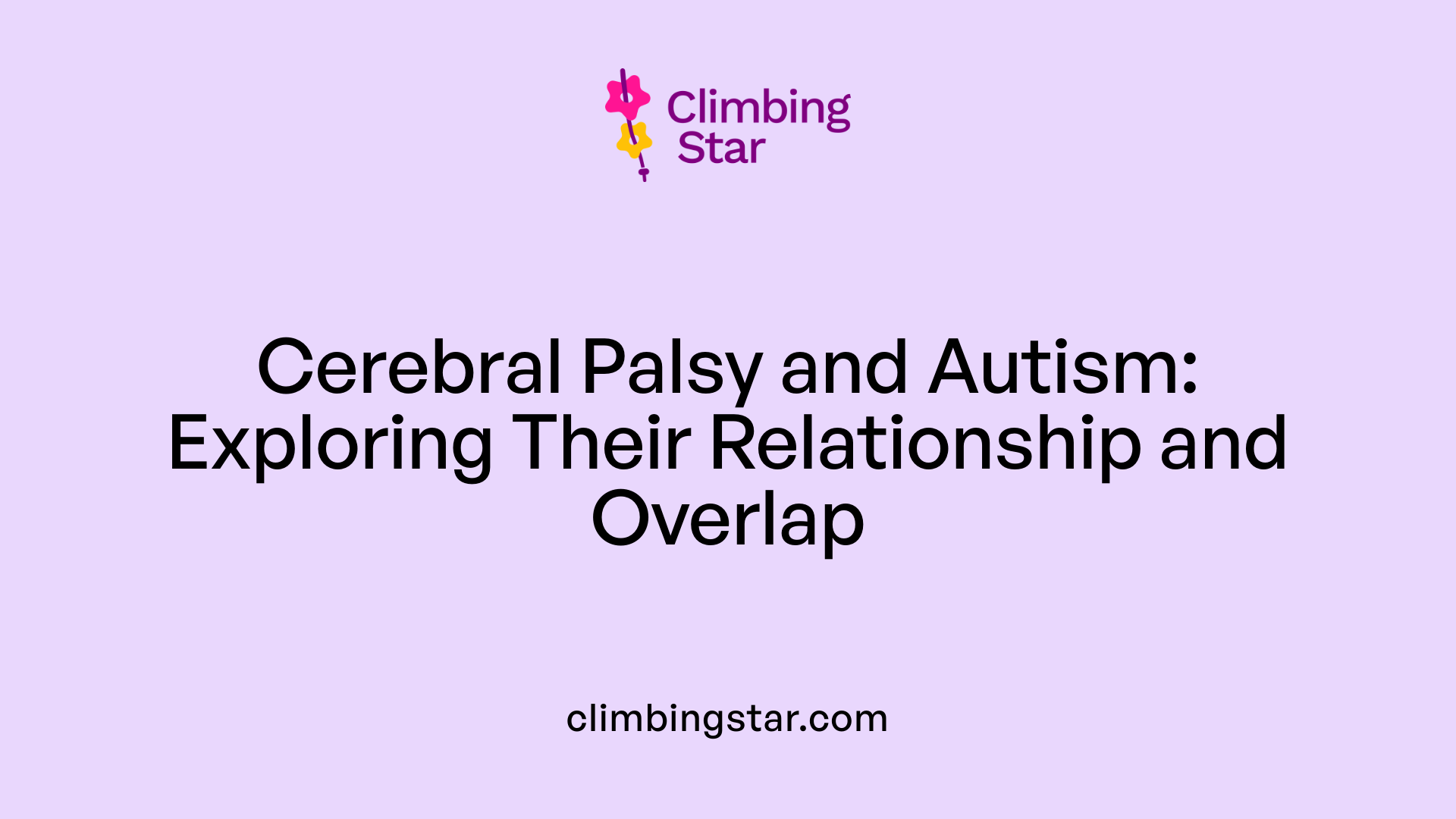
Are cerebral palsy and autism independent conditions or related disorders?
Cerebral palsy (CP) and autism spectrum disorder (ASD) are considered separate neurodevelopmental conditions. CP primarily affects muscle control, movement, and posture, caused by brain injury before, during, or shortly after birth. Autism mainly influences communication, social interaction, behaviors, and sensory processing, with roots in differences in brain development.
Despite their differences, these conditions often co-occur more frequently than chance alone would suggest. Studies show that approximately 6.9% to 8% of children with cerebral palsy also have autism, a rate significantly higher than in the general population where autism affects about 1%. Both disorders share risk factors like preterm birth, brain injury, and genetic factors, highlighting some common neurodevelopmental pathways.
The overlap is further evidenced by the fact that children with both conditions may exhibit overlapping symptoms, such as delayed speech, abnormal movements, and atypical gait. However, each condition has unique diagnostic criteria and management approaches.
While they are classified as distinct, the frequent co-occurrence suggests intertwined neurodevelopmental processes. Researchers continue to explore whether shared genetic or environmental influences contribute across both disorders. Nonetheless, accurate diagnosis is essential, as it guides targeted interventions tailored to each condition’s specific needs.
How do their management strategies differ?
Treating cerebral palsy mainly involves therapies to improve mobility and function: physical therapy, occupational therapy, medication for spasticity, and sometimes surgery. Autism management encompasses behavioral therapies, speech and language therapy, social skills training, and sensory integration techniques.
Despite differences, integrated interventions that address both conditions are recommended when they co-occur. This comprehensive approach aims to maximize the child's development, independence, and quality of life.
Why is tailored intervention important?
Because CP and ASD impact different aspects of development, interventions must be customized to the individual child's profile. Addressing movement limitations while simultaneously supporting communication and social skills ensures a holistic improvement.
In summary, although cerebral palsy and autism are distinct entities, their frequent co-occurrence and shared risk factors suggest related neurodevelopmental origins. Recognizing both conditions allows for more precise diagnosis, better-targeted treatment, and improved outcomes for affected children.
Recognizing and Addressing Co-occurring Conditions
While cerebral palsy does not cause autism directly, the overlap between these conditions is significant and supported by shared risk factors, genetic influences, and neurodevelopmental pathways. Understanding their relationship, recognizing symptoms early, and implementing comprehensive, multidisciplinary interventions can improve outcomes and quality of life for affected children. Continued research into their connections will further clarify the complex interplay between motor and behavioral developmental challenges, ultimately leading to better screening, diagnosis, and personalized treatment approaches.
References
- Cerebral Palsy and Autism | Find Help and Treatment ...
- Cerebral Palsy and Autism
- Association of cerebral palsy with autism spectrum disorder ...
- Cerebral Palsy and Autism Spectrum Disorder
- Cerebral Palsy and Autism
- The connection between cerebral palsy & autism
- Cerebral Palsy ADHD and Autism
- Prevalence of cerebral palsy, co-occurring autism spectrum ...
- Clinical and functional characteristics of co-occurring ...
- Cerebral Palsy and Autism Spectrum Disorder







